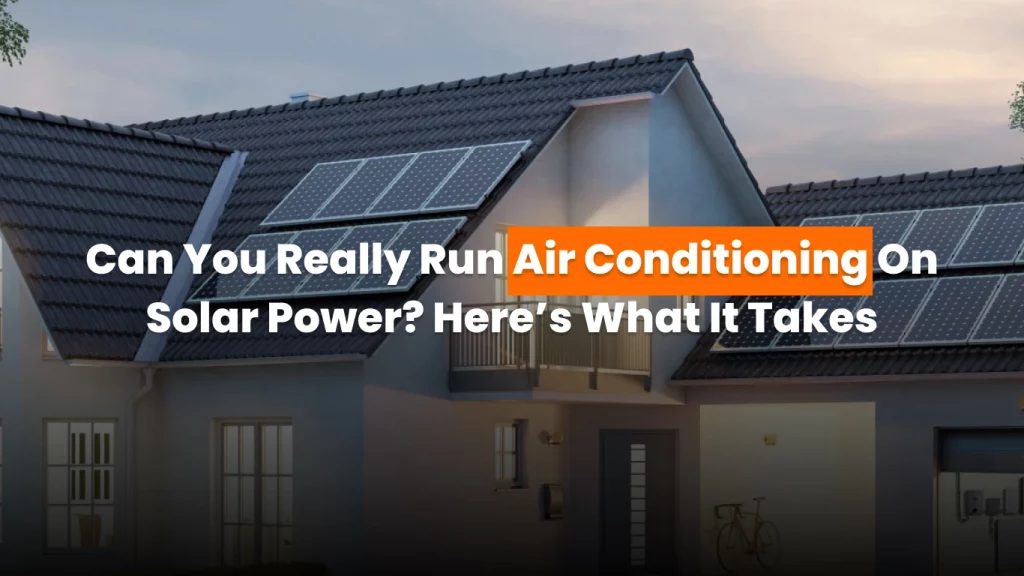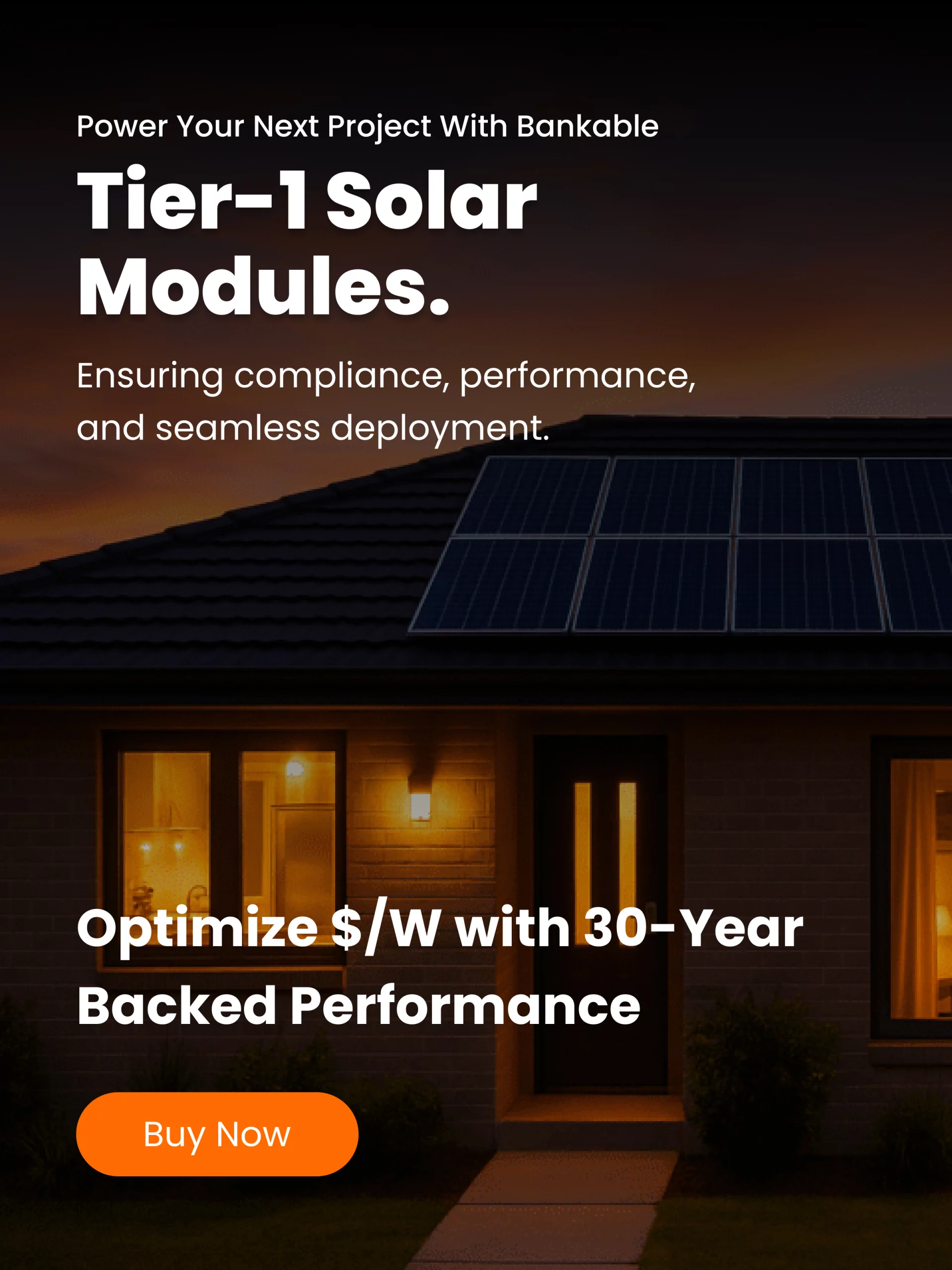When summer temperatures rise, so does electricity demand, especially from air conditioning. For many households, AC units are among the most energy-hungry appliances in the home. That’s why more homeowners are asking an important question: Can I run my air conditioning system using solar panels?
The short answer is yes, but the details depend on your AC type, the size of your solar system, and your energy consumption patterns. With the right setup, solar power can not only keep your home cool but also lower your electricity bills and reduce your reliance on the grid. Let’s break down what you need to know about running AC on solar and how the technology is evolving in 2025.
How much power does an air conditioner really use?
Air conditioning systems vary widely in size and efficiency. A small window AC unit may consume around 500–1,000 watts, while a central air system for a large home can require 3,000–5,000 watts or even more on extremely hot days.
To put that into perspective, the U.S. Department of Energy reports that air conditioning accounts for about 12% of home energy consumption nationwide. In hotter regions such as Texas, Florida, or Arizona, AC use can be much higher, often becoming the largest single contributor to household electricity bills.
This makes AC a prime candidate for solar integration. If solar panels can handle one of the most energy-intensive appliances in the home, they can certainly manage everything else.
How many solar panels are needed for AC?
The exact number of solar panels you’ll need to run an air conditioner depends on several factors:
- AC unit size and efficiency. Modern energy-efficient models use less power than older units. An ENERGY STAR-rated central AC system might need 20–25% less energy.
- Solar panel output. Most residential panels today produce between 350 and 450 watts under ideal conditions. In sunny states, panels will perform at or near their rated output for longer hours.
- Daily usage. Running AC for 4 hours a day requires far less solar capacity than running it for 12+ hours during peak summer heat.
For example, a 3,500-watt central AC unit running for 6 hours consumes about 21 kilowatt-hours (kWh) of electricity. To cover that entirely with solar, you’d need roughly 15–20 panels rated at 400 watts each, assuming good sunlight conditions. If your AC runs longer or your home is in a less sunny region, you’ll need more panels or a combination of panels and battery storage.
Can solar AC run at night?
Solar panels generate power only when the sun is shining, which raises the question: what happens after sunset?
There are two solutions:
- Grid-tied solar systems. Most homes with solar remain connected to the utility grid. During the day, excess solar energy flows back into the grid, and at night you pull electricity from it. Net metering programs—available in many states—can offset nighttime usage with daytime production.
- Solar plus storage. Pairing your system with a home battery, such as a Tesla Powerwall or Enphase battery, allows you to store extra solar energy produced during the day. That stored power can then run your AC at night without tapping the grid.
For those aiming to achieve maximum energy independence, storage is the key. While batteries add upfront costs, they also provide backup during outages and help stabilize energy use during peak demand.
The rise of solar AC systems
As solar adoption grows, manufacturers are introducing Solar AC units designed specifically to integrate with solar power. These systems are engineered for higher efficiency, variable cooling speeds, and seamless connection with solar and storage setups.
Some newer models can operate in hybrid mode, drawing power from solar panels during the day and automatically switching to the grid or batteries at night. This hybrid approach makes cooling more reliable and cost-effective, especially in regions with high energy prices or unstable grids.
Benefits of running AC on solar
- Lower energy bills. Air conditioning can send summer electricity costs soaring. Solar helps offset this expense by producing free, renewable energy right from your rooftop.
- Energy independence. With batteries included, solar-powered AC gives you more control over your electricity use, reducing dependence on utility companies.
- Environmental impact. Traditional cooling heavily relies on fossil fuel-generated electricity, which contributes to carbon emissions. Running AC on solar significantly lowers your home’s carbon footprint.
- Increased home value. Studies from Zillow and Lawrence Berkeley Lab have shown that solar installations often boost property resale value. Having a system that powers major appliances like AC makes solar even more appealing to buyers.
Challenges to consider
While running AC on solar is absolutely possible, it’s not without challenges:
- Upfront costs. A solar system large enough to cover AC use can be a significant investment, especially if batteries are included. However, federal tax credits and state incentives help reduce the cost.
- Roof space. To power heavy AC loads, you’ll need enough roof area to install additional solar panels. Homes with smaller rooftops may need high-efficiency panels or ground-mounted systems.
- Seasonal variations. Solar output fluctuates with weather and daylight hours. While summer provides abundant sunlight, cloudy days or long winter nights may require backup energy sources.
Making solar and AC work together
If you’re considering solar primarily to run air conditioning, here are some practical tips:
- Start with an energy audit. Assess your home’s overall energy use and explore ways to reduce AC demand through insulation, smart thermostats, or more efficient units.
- Choose the right system size. Work with a qualified installer who can size your solar system to cover both AC and other household loads.
- Think about storage. If you want your AC to run reliably at night, consider adding a battery.
- Explore solar AC technology. Ask your installer about hybrid or solar-ready AC systems designed to integrate seamlessly with renewable energy.
The bottom line
Running air conditioning on solar power is no longer a futuristic idea, it’s a practical reality in 2025. With efficient panels, smart inverters, and the rise of Solar AC units, homeowners can stay cool while cutting costs and lowering their environmental impact.
Although the upfront investment can be significant, the long-term savings and benefits often outweigh the costs, especially with incentives and rising grid prices. For those looking to keep their homes comfortable in summer while moving toward cleaner energy, powering AC with solar panels is one of the smartest steps you can take.




